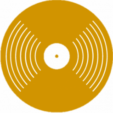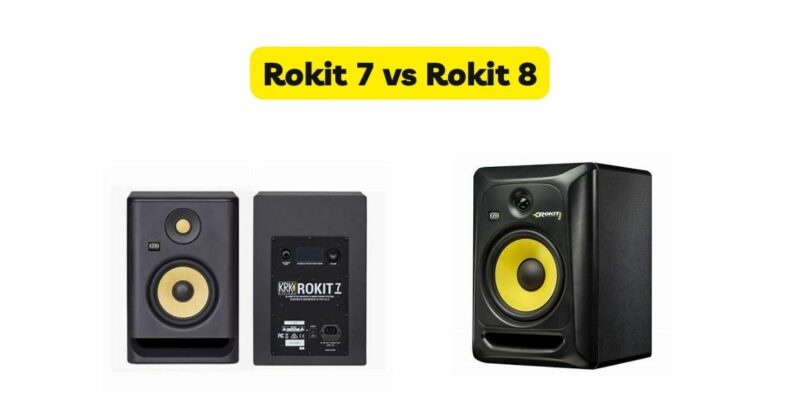Studio monitors are essential tools for music production, providing accurate and detailed sound reproduction. Among the most popular choices in the market, the Rokit 7 and Rokit 8 from KRK Systems stand out as reliable options for both amateur and professional producers. In this in-depth comparison, we will delve into the features, design, sound performance, and other crucial aspects of the Rokit 7 and Rokit 8. By the end of this article, you will have a comprehensive understanding of these studio monitors, helping you make an informed decision based on your specific requirements.
Design and Build Quality
Both the Rokit 7 and Rokit 8 share a similar design philosophy, reflecting KRK’s commitment to delivering high-quality products. They both feature a visually appealing black cabinet with a robust build.The Rokit 7 sports a 7-inch aramid glass composite woofer and a 1-inch soft-dome tweeter, while the Rokit 8 boasts an 8-inch aramid glass composite woofer and the same 1-inch soft-dome tweeter. The larger woofer of the Rokit 8 allows for improved low-frequency response and increased power handling.In terms of physical dimensions, the Rokit 7 is more compact and lightweight, making it suitable for smaller studios or portable setups. On the other hand, the Rokit 8 is larger and heavier, catering to those with more significant studio spaces or a preference for enhanced bass response.
Sound Performance
When it comes to sound performance, the Rokit 7 and Rokit 8 excel in their respective categories, offering accurate monitoring capabilities.The Rokit 7 delivers a frequency response of 44Hz – 40kHz, providing a well-balanced representation of audio across the frequency spectrum. The 7-inch woofer produces tight and controlled bass, while the tweeter handles the high-frequency details with clarity. The Rokit 7’s sound signature is balanced, making it suitable for critical listening and precise mixing tasks.On the other hand, the Rokit 8 extends the frequency response to 35Hz – 35kHz, offering a deeper bass response and overall more extended range. The 8-inch woofer provides a more pronounced low-end presence, ideal for genres that heavily rely on bass elements. The high-frequency performance is equally detailed and accurate, ensuring precise monitoring and sound evaluation.Both models feature KRK’s signature front-firing port design, which minimizes boundary coupling and allows for flexible placement options within the studio environment. This design feature contributes to improved sound dispersion and a more accurate listening experience.
Connectivity and Features
In terms of connectivity, the Rokit 7 and Rokit 8 share similar options to accommodate various audio setups. They offer balanced XLR, balanced 1/4-inch TRS, and unbalanced RCA inputs, allowing for compatibility with a wide range of audio interfaces and equipment.Both models also incorporate rear-panel controls to fine-tune the sound to match the room acoustics. These controls typically include high-frequency and low-frequency adjustment knobs, as well as volume control.Additionally, the Rokit 7 and Rokit 8 come with built-in amplifier protection circuitry, ensuring reliable and safe operation even during prolonged usage. This feature helps prevent damage to the monitors and extends their lifespan.
Price and Room Size Considerations
The price point of the Rokit 7 is generally lower compared to the Rokit 8, making it a more budget-friendly option for those starting out in music production or with limited resources. However, it is important to note that the Rokit 8 justifies its higher price tag with its enhanced bass response and overall larger sound output, catering to professionals or enthusiasts seeking a more robust audio performance.When considering room size, the Rokit 7 is suitable for smaller studios or setups where space is a constraint. Its compact size allows for easy placement on a desk or studio console. The Rokit 8, on the other hand, is better suited for larger studios or rooms, where its bigger sound output and extended low-frequency response can be fully utilized.
Conclusion
In conclusion, both the Rokit 7 and Rokit 8 deliver exceptional sound performance and reliable monitoring capabilities. The choice between the two depends on individual preferences, budget, and room size.The Rokit 7 offers a compact and affordable option, ideal for smaller studios or portable setups. Its balanced sound signature and accurate frequency response make it suitable for critical listening and precise mixing tasks. on the other hand, the Rokit 8 provides a more powerful audio output with its larger woofer and extended frequency response. It caters to those who require deeper bass response and a more immersive sound experience, making it suitable for larger studios or enthusiasts who prioritize low-end presence.Ultimately, your decision should be based on your specific requirements and budget. Both the Rokit 7 and Rokit 8 have proven their worth in the music production industry and have garnered a solid reputation among professionals. Whichever model you choose, you can be confident in the quality, reliability, and performance of these KRK Systems studio monitors.

